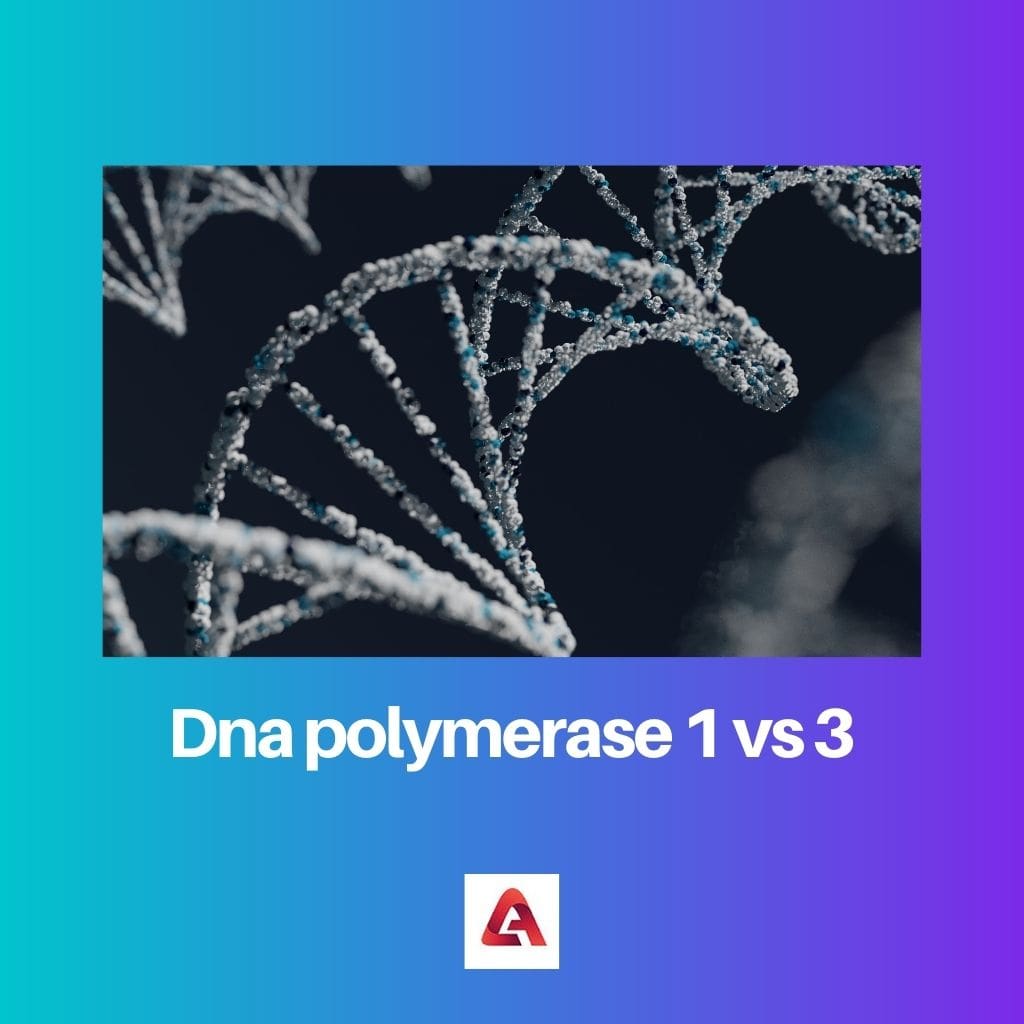DNA Polymerase is a member of the enzyme family that can duplicate genetic information saved in the nucleic acid DNA. This enables the generation of a faithful copy. DNA Polymerase helps to catalyze the synthesis of DNA molecules from nucleoside triphosphates.
These are the molecular precursors of DNA. As a result, they help duplicate the complete genome of any living being before the process of division of a cell. They are also essential to maintain the wholeness of genetic information during the lifespan of a cell.
All living beings that make use of DNA for genetic information need some DNA Polymerase to be able to survive. A living being could either be unicellular or pluricellular, but they all need one or more DNA polymerases to live.
There are various types of DNA Polymerase. The various types depend on the different functions that these DNA Polymerases perform. The most common kinds of DNA Polumeraese are 1 and 3.
Key Takeaways
- DNA polymerase 1 is involved in DNA replication, repair, and recombination, removing RNA primers and filling gaps in the DNA strand; DNA polymerase 3 is the primary enzyme responsible for DNA replication during cell division in prokaryotes.
- DNA polymerase 1 has proofreading and exonuclease activity, allowing error correction during replication; DNA polymerase 3 has a higher processivity and rapidly synthesizes DNA.
- DNA polymerase 1 comprises a single subunit; DNA polymerase 3 is a multisubunit enzyme complex with several subunits with distinct functions.
DNA Polymerase 1 vs. 3
The difference between DNA Polymerase 1 and 3 is that DNA Polymerase 1 is vital to replicate the DNA. It is also commonly known as Pol 1. On the other hand, DNA Polymerase 3 is vital for prokaryotic DNA replication. It is commonly also known as the holoenzyme.

Comparison Table
| Parameter of Comparison | DNA Polymerase 1 | DNA Polymerase 3 |
|---|---|---|
| Main Function | The main function of DNA Polymerase 1 is the replication of the DNA. | The main function of DNA Polymerase 3 is prokaryotic DNA replication. |
| Discovered by | DNA Polymerase 1 was discovered by Arthur Kornberg. | Thomas Kornberg and Malcolm Gefter discovered DNA Polymerase. |
| Discovered In | DNA Polymerase 1 was discovered in 1956. | DNA Polymerase 3 was discovered in 1970. |
| Also Known as | DNA Polymerase 1 is also known as Pol 1. | DNA Polymerase 3 is also known as Holoenzyme. |
| Encoding process | The polyA gene does the encoding process of DNA Polymerase 1. | The encoding process of DNA Polymerase 3 is done by dnaE, dnaQ, and holE genes. |
| Family | DNA Polymerase 1 falls under family A. | DNA Polymerase 3 falls under family C. |
| RNA Primer | The RNA Primer is removed by the DNA Polymerase 1. | The DNA Polymerase requires the RNA Primer to synthesize the DNA. |
| DNA Synthesis | The rate of DNA Synthesis of DNA Polymerase 1 is the addition of 10 to 20 nucleotides per second. | The rate of DNA Synthesis of DNA Polymerase 3 is the addition of around 1000 nucleotides per second. |
What is DNA Polymerase 1?
DNA Polymerase 1 is a common type with polymerization and proofreading activity. It was discovered in 1956 by Arthur Kornberg. The polA gene encodes it. The DNA Polymerase 1 is used to replicate the DNA.
It helps in the process of synthesis of a new DNA strand. DNA Polymerase 1 also helps in filling gaps, repairing, and recombining. While replicating the DNA, the RNA primer is filled in the lagging strand of the DNA.
The RNA primer is removed by the DNA Polymerase 1. It also helps to fill in the essential nucleotides to form the DNA from 5’ to 3’. The rate at which DNA Polymerase 1 synthesis the DNA is about adding 10 to 20 nucleotides per second.
What is DNA Polymerase 3?
DNA Polymerase 3 is one of the main enzymes essential in replicating prokaryotic DNA. It is required to pair the incoming nucleotides with the template strand. DNA Polymerase 3 also helps to proofread the DNA that has been replicated.
It reads the newly added nucleotides of the template strand, and if any mismatches are known, the DNA Polymerase removes it and then synthesis it again. It helps to keep the overall stability of the genome.
DNA Polymerase 3 was discovered in 1970 by Thomas Kornberg and Malcolm Gefter. It is also commonly known as Holoenzyme. It belongs to the Family C or Type C of the DNA Polymerase. DNA Polymerase 3 has a 3′-5′ exonuclease activity.
Main Differences Between DNA Polymerase 1 and 3
- DNA Polymerase 1 is essential for the replication of DNA, while on the other hand, DNA Polymerase 3 is essential for prokaryotic DNA replication.
- DNA Polymerase 1 was first discovered in 1956; on the other hand, DNA Polymerase 3 was first discovered in 1970.
- Arthur Kornberg discovered DNA Polymerase 1. On the other hand, DNA Polymerase 3 was discovered by Thomas Kornberg and Malcolm Gefter.
- DNA Polymerase 1 is also commonly known as Pol 1, while on the other hand, DNA Polymerase 3 is also commonly known as Holoenzyme.
- DNA Polymerase 1 belongs to DNA Polymerase family A while on the other hand, DNA Polymerase 3 belongs to the family C of DNA Polymerase.
- DNA Polymerase 1 removes the RNA primer, while on the other hand, RNA primer is required by DNA Polymerase to synthesize the DNA.
- DNA Polymerase 1 acts on the lagging strand of the replication fork only, while on the other hand, DNA Polymerase 3 acts on the lagging strand and the leading strand of the replication fork.



